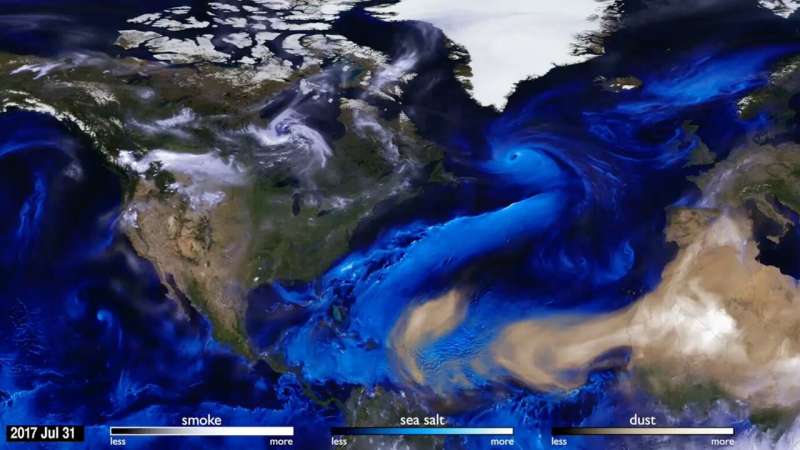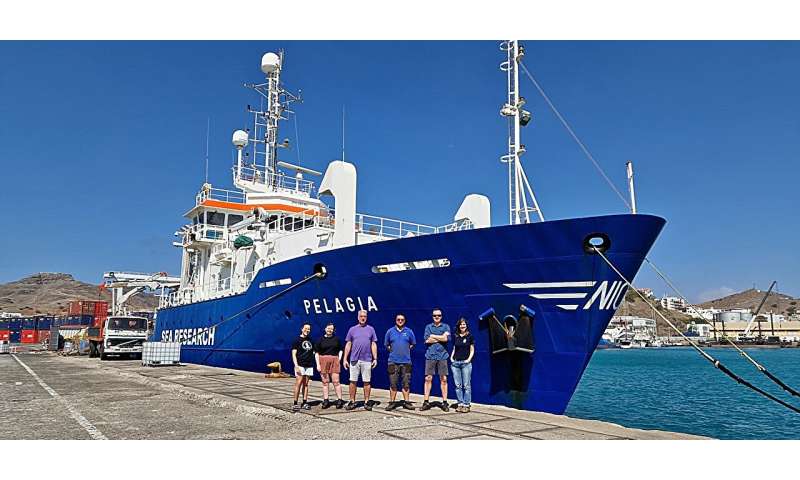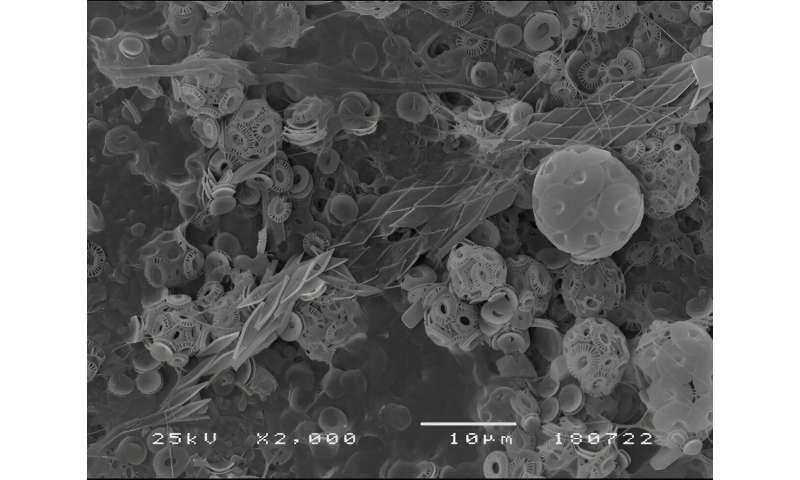This article has been reviewed according to Science X's editorial process and policies. Editors have highlighted the following attributes while ensuring the content's credibility:
fact-checked
peer-reviewed publication
trusted source
proofread
Scientists study ecological response of phytoplankton to nutrient deposition of Saharan dust

A new study, published in the scientific journal Frontiers in Marine Science, reports unprecedented evidence of ecological responses by calcifying phytoplankton to the deposition of nutrients provided by the Saharan dust.
The deposition of this dust in the ocean transports elements such as iron and phosphorus, essential nutrients for the fertilization of marine phytoplankton, especially in remote regions far from the continents, where the ocean is warmer and poorer in nutrients during most of the year.
It is through phytoplankton, a group of organisms made up of tiny (microscopic) marine algae that carry out photosynthesis to reproduce, similar to what happens with terrestrial plants, that the ocean fulfills the double role of a source of oxygen and a "sink" of atmospheric CO2—a crucial contribution to keeping our atmosphere "breathable" for life on Earth.
"Importantly, we observed an increase in the abundance of coccolithophores—a special, very particular and biogeochemically important group of marine phytoplankton due to their calcifying capacity," says Catarina Guerreiro, first author of this study, micropaleontologist and researcher in marine biogeosciences at Marine and Environmental Sciences Center (MARE), at the Faculty of Sciences of the University of Lisbon (Ciências ULisboa) (Portugal).
This allows coccolithophores to interact with, and influence, the marine carbon cycle in three ways: as a natural CO2 sink, through photosynthesis; as a natural source of CO2, through the biomineralization of the exoskeleton; and, finally, as a natural source of mineral ballast that contributes to facilitating the sinking and subsequent sequestration of carbon in the deep ocean.
"Any changes in the productivity of this group [coccolithophores] have a huge potential to alter the Biological Carbon Pump, as it is determined by the rate at which carbon is biologically sequestered from the atmosphere through photosynthesis its subsequent sinking and sequestration in the deep ocean in the form of organic and inorganic particulate carbon," adds the researcher.
This study resulted from the collaboration between MARE and Instituto Dom Luiz (Ciências ULisboa, Portugal), Plymouth Marine Laboratory and University of East Anglia (UK), Royal Netherlands Institute for Sea Research, and Institut de Ciencies del Mar (Spain). It is based in multidisciplinary data that were gathered during the Atlantic Meridional Transect (AMT28) between September and October 2018.
-

Catarina Guerreiro and Jan-Berend Stuut (left) together with other members of expedition 64PE514-DUST2023, in front of the RV Pelagia in the port of Mindelo, Cape Verde. Credit: Jan-Berend Stuut -

Image of a coccolithophore bloom captured on the surface of the tropical NE Atlantic Ocean, in April 2016. Image obtained through the Electron Microscope of the Department of Plant Biology, at Ciências ULisboa (Portugal). Credit: Telmo Nunes and Catarina V. Guerreiro
Tropical Atlantic under study: Next steps
Following this research, Guerreiro now embraces a follow-up challenge that led her to join a multidisciplinary expedition aboard the Dutch ship RV Pelagia, to investigate biogeochemical processes related to upwelling currents and the deposition of desert dust in the North-East tropical Atlantic.
"This new research step will help to identify the coccolithophores species that most influence the Biological Carbon Bomb in the region, and will allow us to calibrate the paleoecological potential of this group of phytoplankton as a tool for studying oceanic conditions and the deposition of atmospheric dust in the geological past of this region," highlights Catarina Guerreiro.
The goal is to combine insights from the biological, hydrological, and sedimentological data collected during the expedition with data from these buoys and sediment traps for investigating the link of Saharan dust deposition to shifts in phytoplankton communities living in the underling photic zone. Since this region is part of the Canary Current Eastern Boundary Upwelling System (EBUS), outcomes from this expedition will contribute to the aims of project PRIMUS (PRIMary-productivity in Upwelling Systems) where the researcher leads an Earth Science Case using particle flux data from sediment trap moored offshore Northwest Africa.
More information: Catarina V. Guerreiro et al, Response of coccolithophore communities to oceanographic and atmospheric processes across the North- and Equatorial Atlantic, Frontiers in Marine Science (2023). DOI: 10.3389/fmars.2023.1119488
Journal information: Frontiers in Marine Science
Provided by University of Lisbon


















